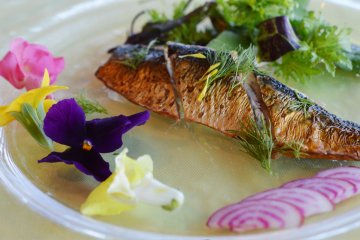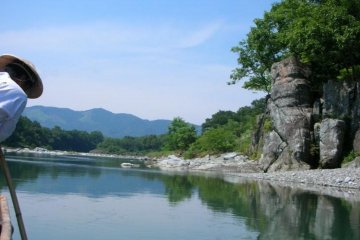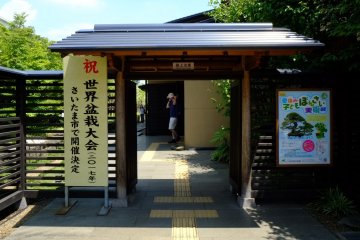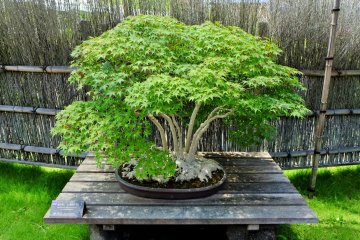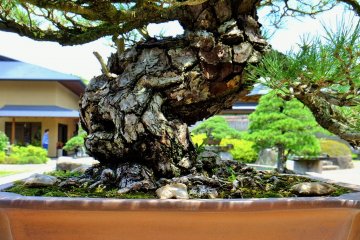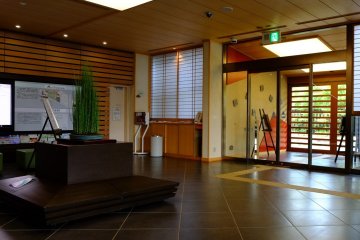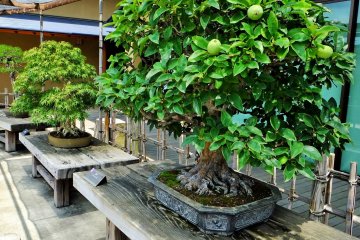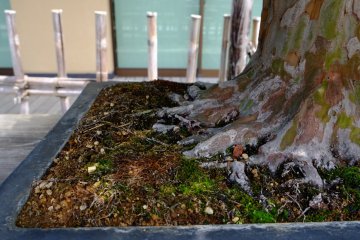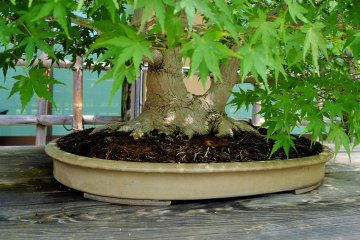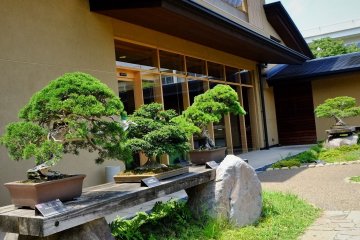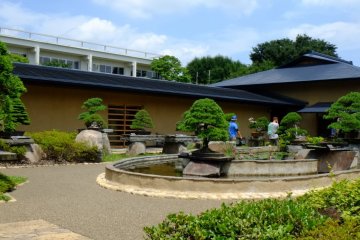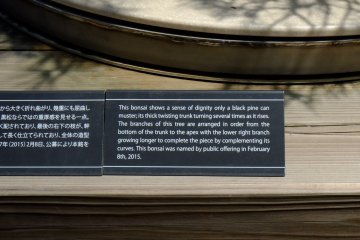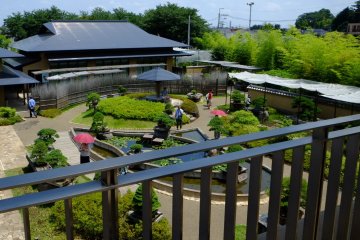The Omiya Bonsai Village in Saitama could be considered one of, if not the world centre of bonsai. Established in 1925 by a group of bonsai gardeners uprooted by the Great Kanto Earthquake, it has produced many outstanding bonsai over the years and even hosted the first World Bonsai Convention. Opened in 2010, the Bonsai Art Museum showcases not only the finest bonsai from the gardens of the Bonsai Village, but also pots, interior design, bonsai-themed art, and suiseki landscape stones.
Upon entering I was surprised to find that adult entrance was only ¥300 – less than my train from Tokyo. The lobby is a cool and pleasant open space, with a “seasonal bonsai” taking centre stage. The receptionist eagerly provided me with an armful of reading material to accompany my visit, and took my friend’s luggage for safekeeping. The first section of the museum is a long corridor where photography is strictly forbidden. It contains a series of beautiful smaller bonsai, widely-spaced and labelled in English and Japanese. At the end of the corridor, one turns right to find a display of three styles of Japanese interior design, including a beautiful tea room. You then step outside into the large courtyard, where the majority of the museum’s bonsai are displayed around a central water feature. These are much larger than their indoor counterparts, which allows you to see in greater detail the care that has been taken in shaping and potting these artful plants. The majority are Shohaku (evergreen) varieties such as Japanese Five Needle Pine or Yezo Spruce, though there are plenty of deciduous bonsai too (which I’m told are stunning in autumn). In addition to the type of tree, Bonsai are put into aesthetic categories. There are symmetrical and asymmetrical (chokkan or Moyo-gi) leaning or cascading (fukinagashi or kengai) or small forests either emanating from one root or consisting of several trees (ne-tsuranari or yose-ue). These tiny forests were my favourite, as one can mentally shrink oneself down while looking at them, imagining walking amongst the branches and moss. It is an interesting note that large bonsai are so impressive to the eye, as they are still very miniature versions of normal trees. Such bonsai can be centuries old, so perhaps all that history condensed into such a small tree is what makes them so impactful.
There is a balcony above the courtyard allowing you to see the museum as a whole, the people below you becoming almost as miniature as the trees they’re walking around. A small gift shop rounds off your trip, with tasteful fare on offer including books, fabrics, and cute bonsai-themed lemonade (or cider, as the Japanese call it). All in all, this is a stunning little museum and worth the trifle entry fee a dozen times over. The care taken not only in growing the bonsai but also in displaying them is evident throughout, and I couldn’t recommend it enough.





